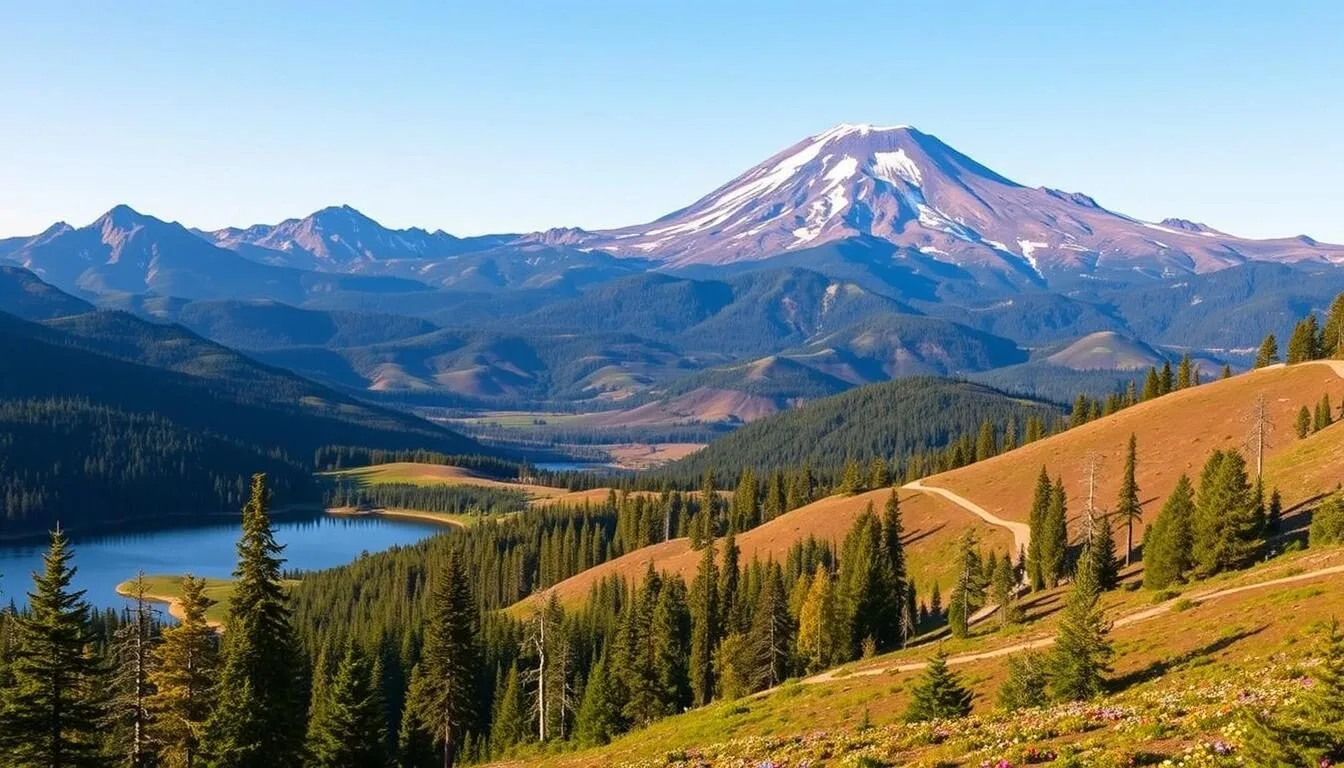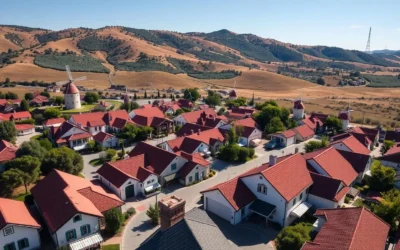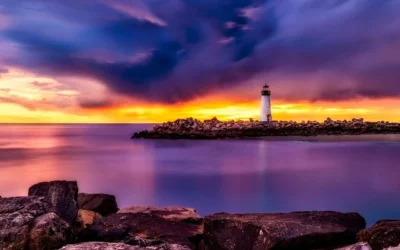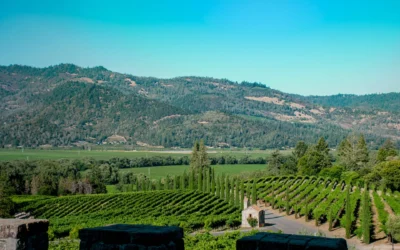Nestled in the heart of Northern California, Lassen Volcanic National Park is a treasure trove of geothermal wonders, pristine lakes, and scenic trails.
As the southernmost peak in the 700-mile Cascade Mountain Range, Lassen Peak stands tall, offering breathtaking views and unforgettable hiking experiences. Unlike more popular California national parks, this park remains a hidden gem, waiting to be explored.
You can discover the park’s unique geology, from steaming fumaroles to boiling springs, and enjoy various outdoor activities that cater to all types of adventurers.
Discovering Lassen Volcanic National Park: A Hidden Gem in Northern California
Tucked away in Northern California, Lassen Volcanic National Park is a treasure waiting to be discovered. Located east of the town of Redding, this national park is a haven for those who love the outdoors. With its diverse landscapes, ranging from hydrothermal areas to beautiful lakes and extensive hiking trails, Lassen Volcanic National Park is a must-visit destination for nature enthusiasts.
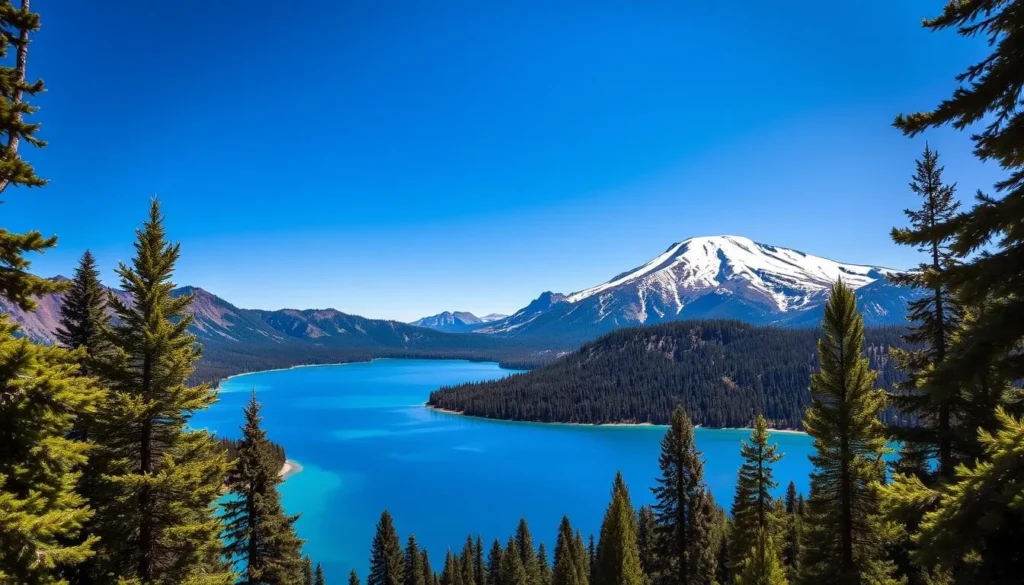
The park is situated at the southern end of the Cascade Range, boasting a unique volcanic landscape that has been shaped by centuries of geological activity. As you explore the park, you’ll encounter all four types of volcanoes: shield, composite, cinder cone, and plug dome. This diversity makes Lassen Volcanic National Park a living laboratory for studying volcanic processes.
The Geological Wonder of the Cascades
Lassen Peak, standing tall at 10,457 feet, is the largest plug dome volcano on Earth and the southernmost peak in the 700-mile Cascade Mountain Range. Its dramatic eruption in 1915 significantly reshaped the surrounding landscape, creating a unique environment that continues to fascinate visitors today. The park’s hydrothermal areas, featuring bubbling mud pots, steaming fumaroles, and boiling springs, are a testament to the active volcanic nature beneath the surface.
Some of the key geological features of the park include:
- A diverse volcanic landscape shaped by centuries of geological activity.
- All four types of volcanoes found in the world: shield, composite, cinder cone, and plug dome.
- Lassen Peak, the largest plug dome volcano on Earth, which last erupted in 1915.
- Hydrothermal areas with bubbling mud pots, steaming fumaroles, and boiling springs.
Unlike more frequented national parks in California, Lassen Volcanic National Park offers a serene experience with fewer crowds, making it an ideal destination for those seeking a more peaceful connection with nature. As you explore this hidden gem, you’ll discover that its unique blend of volcanic features and natural beauty makes it a truly unforgettable experience.
Planning Your Visit to Lassen Volcanic National Park
To make the most of your visit to Lassen Volcanic National Park, it’s essential to plan around the optimal visiting season. The park’s accessibility and the experiences it offers vary significantly throughout the year due to its high elevation and snowy winters.

Best Time to Visit
The ideal time to explore Lassen Volcanic National Park is between July and September. During these months, most park roads and trails are fully accessible after the winter snow melts.
- The main park road, Lassen Volcanic National Park Highway (Highway 89), typically opens fully in June or July and may close as early as October due to snowfall.
- Summer offers warm days (60-80°F) and cool nights (40-50°F), perfect for hiking and exploring the park’s geothermal features like Bumpass Hell and Sulphur Works.
- Fall brings beautiful colors to the park’s meadows and forests, though visitors should be prepared for potential early season snow closures.
While summer is the peak season, Lassen Volcanic National Park offers unique experiences in other seasons as well. Winter transforms the park into a snow-covered wonderland, though access is limited to the northern and southern entrances, with most of the park road closed to vehicles. Always check the snow conditions before planning your trip and have a backup plan in case of road closures.
Lassen Volcanic National Park, California: Best Things to Do – Top Picks
If you’re looking for a less crowded alternative to Yosemite or Yellowstone, Lassen Volcanic National Park is an excellent choice. The park boasts incredible mountain scenery reminiscent of Yosemite as well as fascinating thermal wonders similar to Yellowstone, all with just a small fraction of visitors.
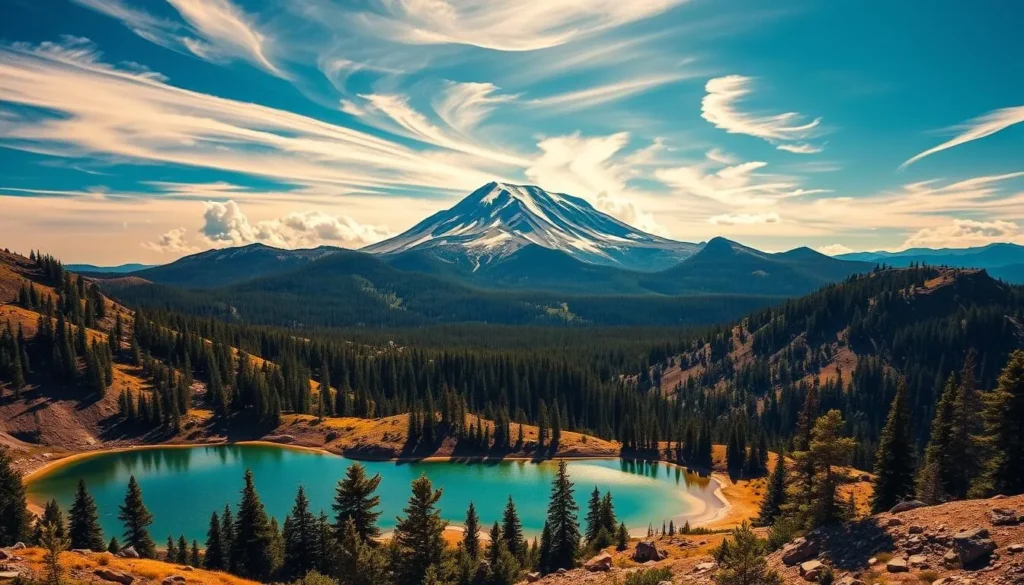
Understanding the Park’s Diverse Attractions
Lassen Volcanic National Park offers a remarkable diversity of attractions that can be enjoyed whether you have a few hours or several days to explore. The park can be divided into several distinct areas, each offering unique experiences.
- The Manzanita Lake area provides a serene start to your visit, with opportunities for kayaking and relaxing.
- The Sulphur Works and Bumpass Hell hydrothermal areas showcase the park’s unique geothermal features.
- The Summit Lake region is perfect for those looking to hike and enjoy panoramic views.
- The Warner Valley area offers a more secluded experience, with its own set of hiking trails and natural wonders.
| Area | Main Attractions | Activities |
|---|---|---|
| Manzanita Lake | Serene lake, scenic views | Kayaking, relaxing |
| Sulphur Works and Bumpass Hell | Hydrothermal areas, geothermal features | Hiking, exploration |
| Summit Lake | Panoramic views, hiking trails | Hiking, picnicking |
| Warner Valley | Secluded landscapes, natural wonders | Hiking, nature observation |
For those with limited time, driving the 30-mile Lassen Volcanic National Park Highway (Highway 89) is recommended, as it provides access to many key viewpoints and shorter trails. For a more immersive experience, the park’s extensive trail system offers everything from easy strolls to challenging summit hikes that showcase the area’s volcanic features.
Conquering Lassen Peak: The Park’s Iconic Summit
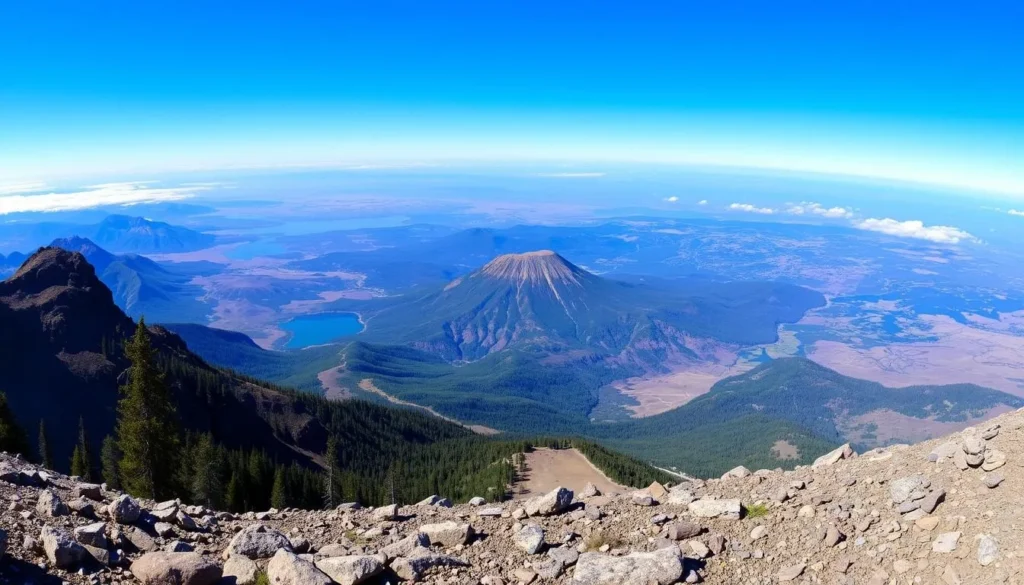
Conquering Lassen Peak, the crown jewel of Lassen Volcanic National Park, is an unforgettable experience that combines challenging hiking with spectacular scenery. As the largest lava dome on Earth, Lassen Peak, or Mount Lassen, offers a unique hiking adventure.
Trail Details and Difficulty Level
The Lassen Peak Trail is a challenging but rewarding 5-mile round-trip hike that climbs 2,000 feet to the summit of one of the largest plug dome volcanoes in the world. The trail features numerous switchbacks on a well-maintained but steep path, with the high elevation (starting at 8,500 feet and climbing to 10,457 feet) adding to the difficulty.
Key Trail Features:
- The trail is rated difficult due to its high altitude, steep ascent, rocky terrain, and challenging switchbacks.
- Hikers should be prepared for changing weather conditions, strong winds at the summit, and full sun exposure as there is no shade along the trail.
- From the summit, you’ll enjoy panoramic views of the surrounding Cascade Range, the Sacramento Valley, and on clear days, even Mount Shasta to the north.
- The hike typically takes 3-5 hours to complete, and it’s recommended to start early in the morning to avoid afternoon thunderstorms and heat.
As you hike, the rugged terrain and unique geological features of Lassen Peak will captivate your senses. The panoramic views from the summit are truly breathtaking, making the challenging hike well worth the effort.
Exploring Cinder Cone and the Painted Dunes
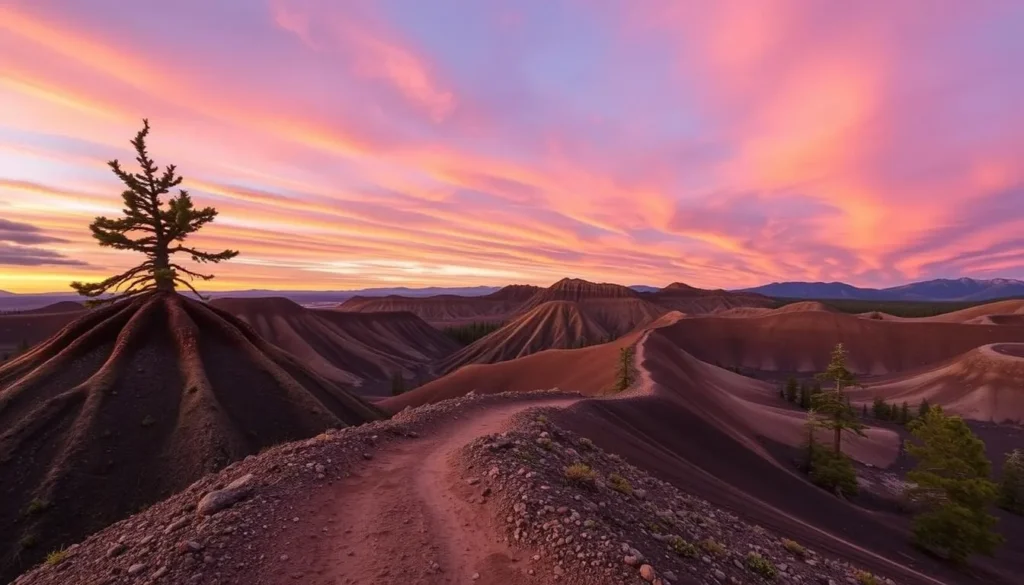
The Cinder Cone Trail in Lassen Volcanic National Park is a must-visit destination for its breathtaking views. Located in the northeast part of the park, this 4.7-mile round-trip hike is a great place to explore the beautiful volcanic landscape within the park.
The Unique Volcanic Landscape
The trail takes you through a fascinating landscape of volcanic features before reaching the base of the Cinder Cone, a perfectly symmetrical volcanic cone formed about 350 years ago. The initial portion of the trail is relatively flat, but be prepared for a very steep hike up the cinder cone, as the trail gains roughly 500 ft. (150 m) in only 0.25 miles (0.4 km) from the base of the cone to the summit.
The Cinder Cone Trail offers several unique features, including:
- The trail leads to one of the most unique volcanic features in Lassen Volcanic National Park.
- The final ascent up the cone is surprisingly challenging, with loose cinder material making each step forward feel like sliding half a step back.
- From the summit, you’ll be rewarded with spectacular views of the colorful Painted Dunes, whose vibrant red, orange, and brown hues are most dramatic during the golden hours of sunrise and sunset.
- The trail also offers views of the Fantastic Lava Beds and Snag Lake, creating a landscape that feels otherworldly and distinctly different from other areas of the park.
If you’re interested in photographing the vibrant colors of the Painted Dunes, I recommend the Cinder Cone Trail for either sunrise or sunset, as the soft light brings out the best of the colors during these times. The Cinder Cone Trail is a great way to experience the natural beauty of Lassen Volcanic National Park.
Geothermal Wonders: Bumpass Hell and Sulphur Works
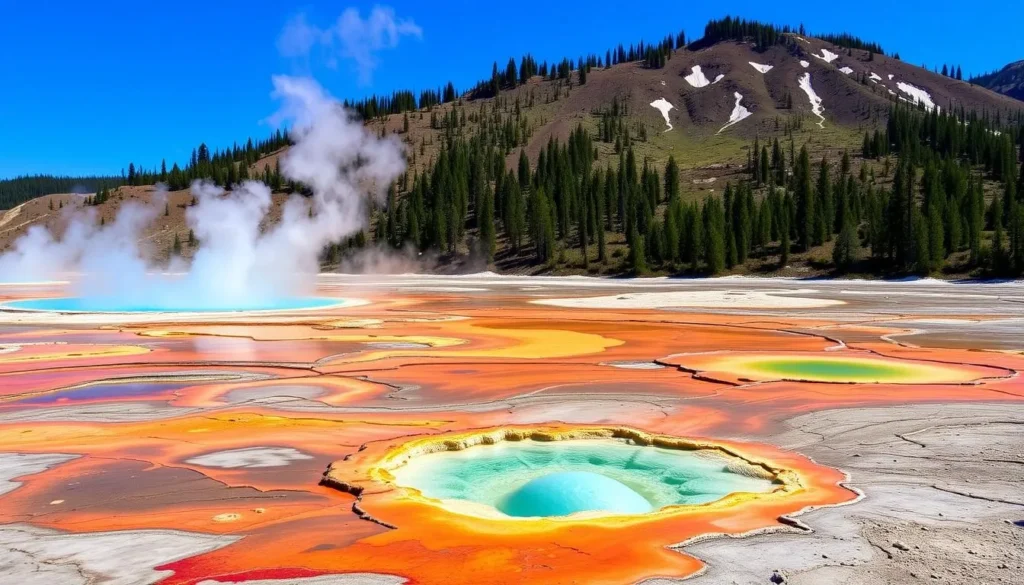
One of the park’s most striking attractions is Bumpass Hell, a vast hydrothermal area that will leave you in awe. Located within Lassen Volcanic National Park, Bumpass Hell is an assault on your senses long before you step on the boardwalk. The smell of rotten eggs engulfs you and stays with you long after you leave the area.
If you are highly sensitive to smells, it might trigger a headache, so be prepared. It is the largest hydrothermal area in the park, featuring a 16-acre basin of boiling mud pots, steaming fumaroles, and colorful hot springs.
Bumpass Hell: The Park’s Largest Hydrothermal Area
The area is accessed via a 3-mile round-trip trail that offers spectacular views of Lassen Peak and the surrounding mountains before descending to the hydrothermal basin. A series of boardwalks allows visitors to safely navigate through the area while protecting the fragile thermal features.
- Bumpass Hell is the park’s largest and most impressive hydrothermal area.
- The Big Boiler, one of the hottest fumaroles in the world, can reach temperatures of up to 322°F.
- Sulphur Works, located near the southwest entrance of the park, offers a more accessible alternative.
The story behind Bumpass Hell is as fascinating as the site itself. Pioneer Kendall Bumpass experienced the dangers of the hydrothermal area firsthand when the thin soil broke, causing him to fall into a boiling pool and severely burn his leg.
Today, visitors can explore this unique area safely and learn about its geological significance. The combination of geothermal features and the park’s volcanic landscape makes Bumpass Hell a must-visit destination within Lassen Volcanic National Park.
Serene Alpine Lakes: Helen, Summit, and Manzanita
With its crystal-clear waters and picturesque surroundings, the alpine lakes of Lassen Volcanic National Park are a true natural wonder. These lakes offer a serene and peaceful atmosphere, perfect for relaxation and outdoor activities.
Lake Helen: The Jewel of Lassen
Lake Helen is a stunning alpine lake located at the base of Lassen Peak, one of the park’s most photographed locations. This beautiful lake remains frozen for much of the year due to its high elevation of 8,200 feet. Even in mid-summer, the water is extremely cold, making it more suitable for photography and picnicking than for swimming.
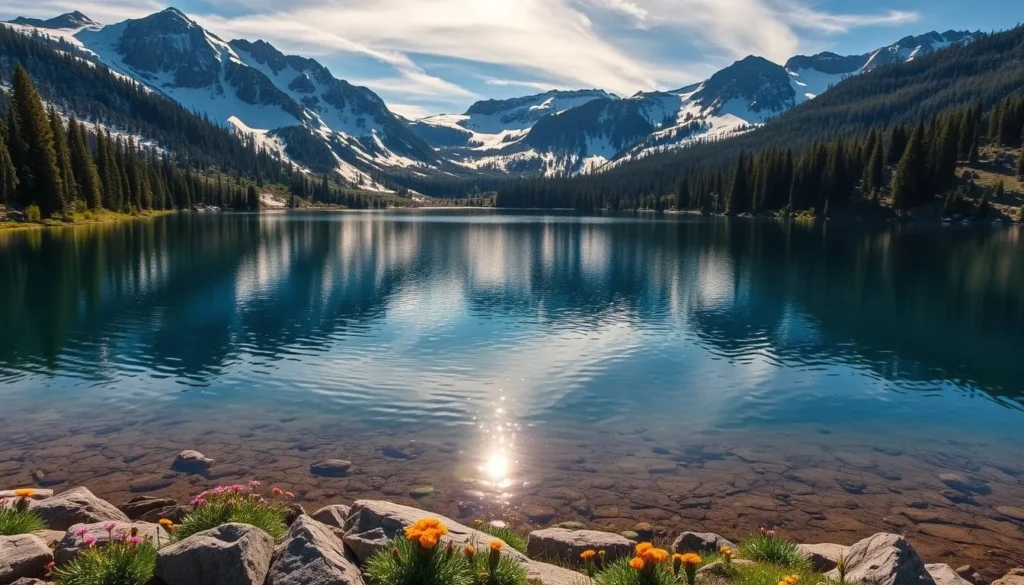
The lake’s sapphire blue waters reflect the surrounding volcanic landscape, creating a breathtaking scenery. Visitors can enjoy boating or kayaking on the lake, taking in the majestic views of the surrounding mountains.
Other Notable Alpine Lakes
In addition to Lake Helen, Lassen Volcanic National Park is home to other beautiful alpine lakes, including Summit Lake and Manzanita Lake. These lakes offer a range of outdoor activities and stunning scenery.
| Lake Name | Location | Activities |
|---|---|---|
| Lake Helen | Base of Lassen Peak | Photography, Picnicking, Boating, Kayaking |
| Summit Lake | Center of the park | Fishing, Kayaking, Camping |
| Manzanita Lake | Northwest entrance | Fishing, Kayaking, Wildlife Viewing |
Summit Lake, located in the center of the park, offers excellent camping opportunities with two campgrounds and is popular for fishing and kayaking. Manzanita Lake, near the northwest entrance, is known for its perfect reflections of Lassen Peak, especially during sunrise and sunset.
These serene alpine lakes are a must-visit destination within Lassen Volcanic National Park, offering a unique and unforgettable experience amidst nature’s beauty.
Chasing Waterfalls: Kings Creek Falls Trail
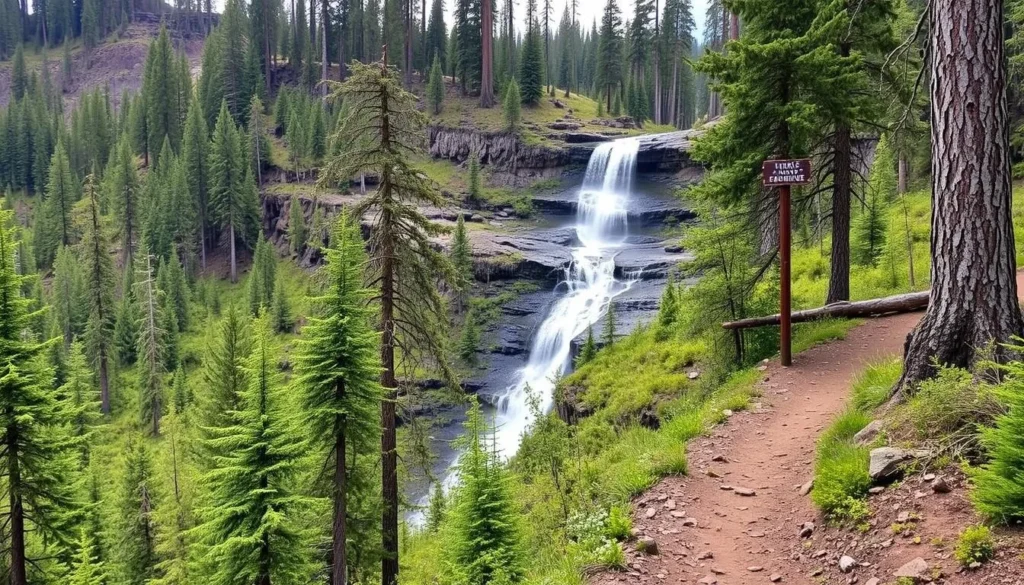
The Kings Creek Falls Trail, nestled within Lassen Volcanic National Park, is a must-visit destination for nature enthusiasts and hikers alike. This 2.3-mile loop trail offers a captivating hiking experience through beautiful meadows and forests, culminating in a breathtaking 30-foot waterfall.
Trail Description and Difficulty
The trail begins with a deceptively easy, flat section through meadows, but it gradually becomes more challenging with a steep descent featuring stone steps and switchbacks. Hiking boots are highly recommended due to the muddy and rocky terrain throughout the trail and a slippery stone staircase on the way back.
The trail offers two routes to the falls: the steeper but shorter “horse loop” or the longer but more gradual “cascade” route. Many hikers choose to make a loop using both paths, enjoying the varied scenery and the roaring waterfall surrounded by ferns and foliage.
Key Features of the Trail:
- The Kings Creek Falls Trail is a 2.3-mile loop that takes hikers through beautiful meadows and forests before reaching a 30-foot waterfall cascading down volcanic rock.
- Hikers can choose between two routes to the falls: the steeper but shorter “horse loop” or the longer but more gradual “cascade” route.
- The viewing platforms at the falls provide safe places to enjoy the waterfall, though more adventurous hikers can carefully make their way to the base of the falls for a different perspective.
- The trail is best hiked from July through September when wildflowers bloom in the meadows and the creek is flowing at an optimal level.
As you hike the Kings Creek Falls Trail, be sure to take in the natural beauty surrounding you and enjoy the thrilling experience that this trail has to offer.
Off the Beaten Path: Prospect Peak and Reflection Lake
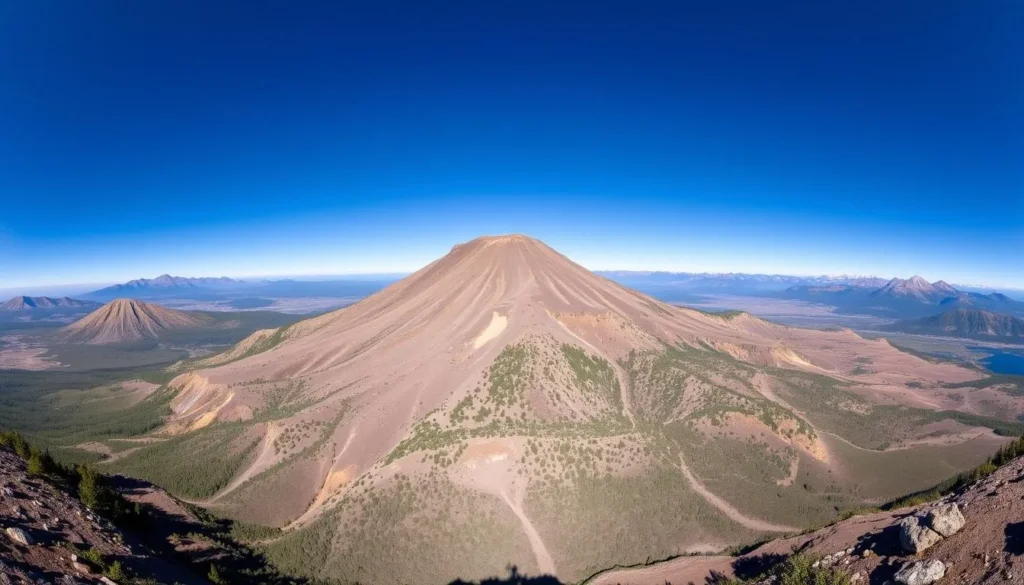
Beyond the popular trails, Lassen Volcanic National Park hides gems like Prospect Peak and Reflection Lake. If you’re looking for a less crowded experience, these destinations offer a mix of adventure and serene natural beauty.
Prospect Peak: A Less-Trafficked Gem
Prospect Peak is one of the least-trafficked trails in Lassen Volcanic National Park, making it an ideal choice for those seeking solitude. The 6.9-mile round-trip hike to the summit is challenging but rewarding, with panoramic views of the park and Lassen Peak. The trail steadily climbs through forest and open areas, gaining about 1,800 feet in elevation to reach the 8,338-foot summit.
The early morning is the best time to hike Prospect Peak, as the first light illuminating Lassen Peak creates spectacular photography opportunities. You’ll enjoy the serene atmosphere and the chance to witness the sunrise over the park’s unique landscape.
Another hidden gem is Reflection Lake, located near the northwest entrance by the Loomis Museum. This 0.6-mile loop trail is perfect for families with small children, offering magnificent views and reflections of Chaos Crags and Mt. Lassen. The lake’s calm waters provide a mirror-like reflection, especially during the morning when the surface is like glass.
Boiling Springs Lake and Devils Kitchen: Warner Valley’s Thermal Features
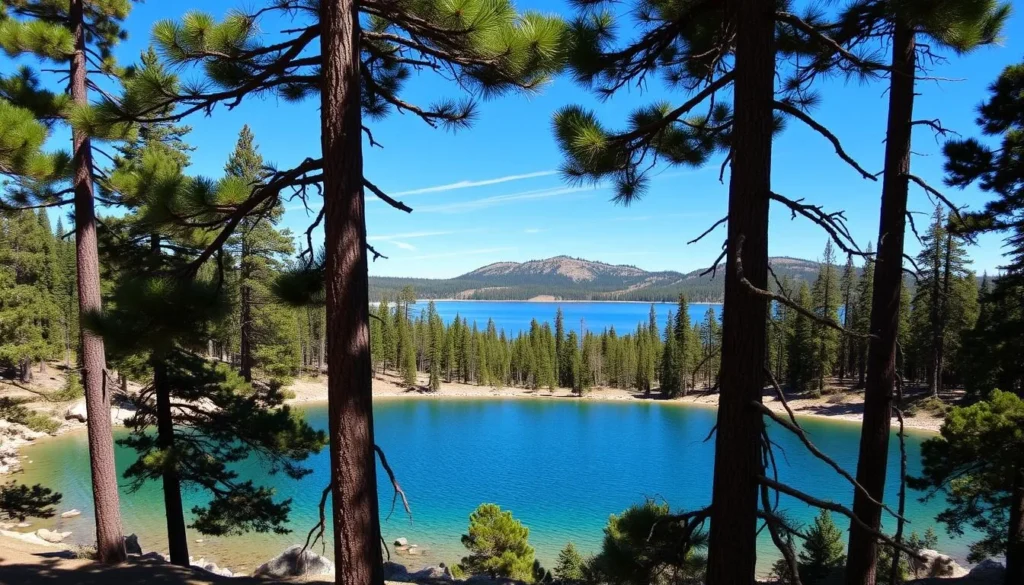
The Warner Valley area of Lassen Volcanic National Park is home to two remarkable thermal features: Boiling Springs Lake and Devils Kitchen. Boiling Springs Lake is one of the park’s most unique hydrothermal features, with its milky blue-green waters maintained at approximately 125°F by underwater steam vents.
The Vibrant Colors of Boiling Springs Lake
The lake’s unusual color comes from suspended sulfur and clay particles, while the reddish soil around the lake is the result of iron oxide minerals altered by the acidic water. The 2.3-mile round-trip trail to the lake is relatively easy and takes hikers through a beautiful forest before revealing the striking contrast between the vibrant lake and its surrounding red soil banks.
Devils Kitchen, accessed via a 4.2-mile round-trip trail from the same trailhead, is the second-largest hydrothermal area in the park, featuring steaming fumaroles, boiling mud pots, and hot springs. Both Boiling Springs Lake and Devils Kitchen are located in the Warner Valley section of the park, a less-visited area that provides a more secluded experience away from the main park road.
When visiting these thermal features, it’s essential to stay on the designated trails due to the unstable ground and highly acidic boiling water. The unique geothermal activity in this area makes it a fascinating destination for those interested in exploring the natural wonders of Lassen Volcanic National Park.
Quick Stops Along Lassen Volcanic National Highway
Lassen Volcanic National Park Highway is a 30-mile scenic drive that provides numerous opportunities to stop and explore the park’s highlights. This highway, also known as Highway 89, is the main route through the park and offers various pull-outs and short trails to experience the park’s diverse landscapes.
Emerald Lake and Upper Meadow
Emerald Lake is one of the first stops you’ll encounter while driving through the park. It’s a small but stunning alpine lake that provides excellent reflections of the surrounding mountains, especially during the calm morning hours. Upper Meadow is another stop along the highway, offering a peaceful spot to observe wildlife and wildflowers with views of Lassen Peak.
| Stop | Description | Parking |
|---|---|---|
| Emerald Lake | Small alpine lake with reflections of surrounding mountains | Adequate |
| Upper Meadow | Peaceful spot to observe wildlife and wildflowers | Limited |
| Devastated Area Trail | Interpretive trail about the 1915 volcanic eruption | Lots of parking |
As you continue your drive, you’ll come across the Devastated Area Trail, a short and wheelchair-accessible interpretive trail that tells the story of the 1915 eruption through displays and signage. Sulphur Works, located near the southwest entrance, is another accessible hydrothermal area that can be viewed from roadside pullouts and a short path.
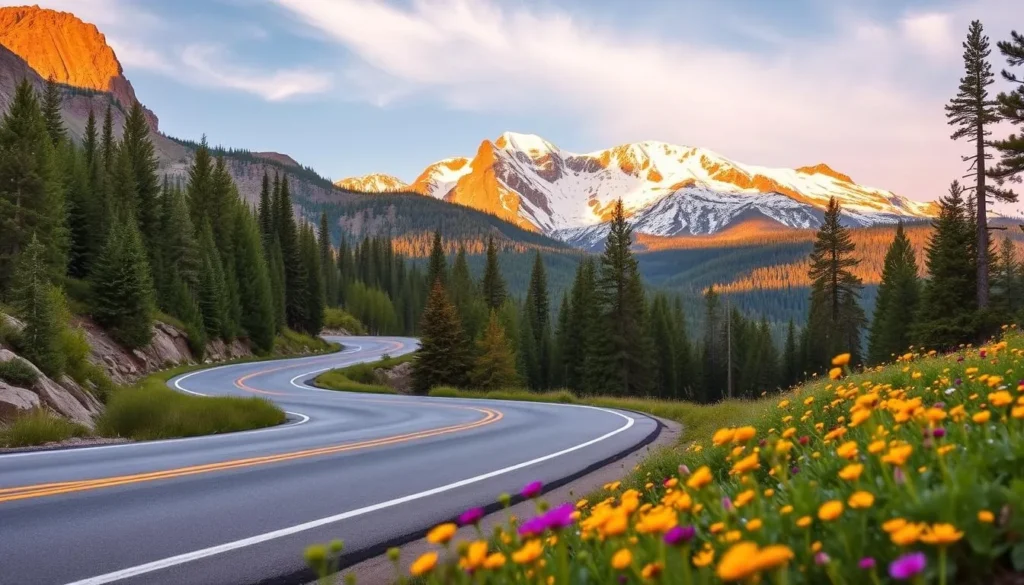
Camping and Accommodation Options in Lassen Volcanic National Park
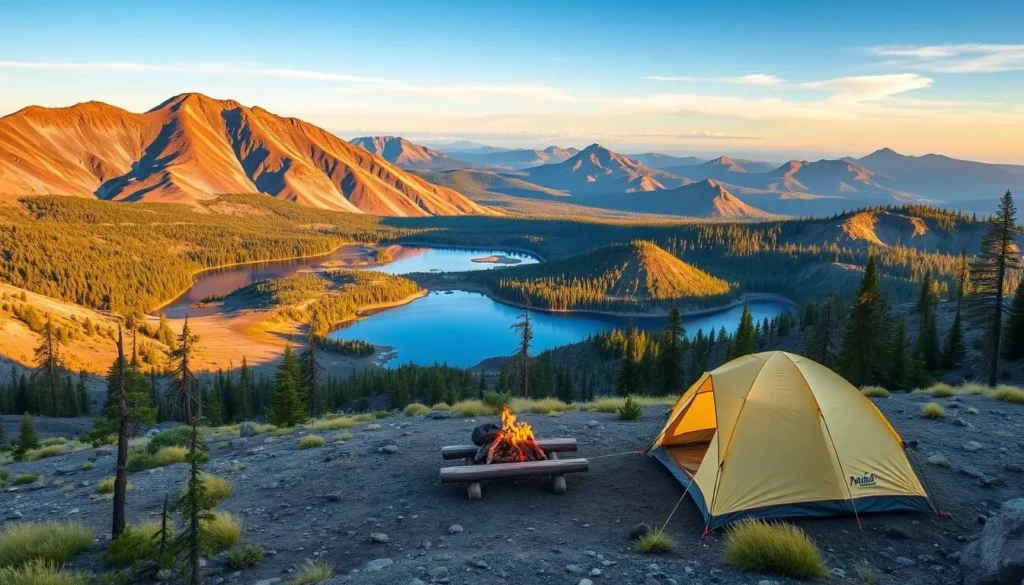
With its stunning landscapes and varied camping facilities, Lassen Volcanic National Park is a camper’s paradise. The park offers seven campgrounds with over 400 campsites, ranging from developed facilities with flush toilets to more primitive options. Whether you’re looking for a serene lakeside experience or an adventurous stay amidst volcanic landscapes, Lassen Volcanic has something for everyone.
Campgrounds Within the Park
The park’s campgrounds are as diverse as they are beautiful. Manzanita Lake Campground, near the northwest entrance, is the park’s largest and most popular, offering 179 sites and easy access to the lake and visitor center. Summit Lake Campgrounds (North and South) provide beautiful lakeside camping, making them excellent bases for exploring multiple park attractions.
Other notable campgrounds include Butte Lake Campground, which offers 101 sites near the trailhead for Cinder Cone and is one of the first to open in the season. For those seeking accommodations outside the park, the nearby towns of Chester, Mineral, and Shingletown offer lodging options ranging from rustic cabins to comfortable hotels.
When planning your visit, consider the time of day and the hours of operation for the campgrounds and other park facilities to make the most of your stay.
Seasonal Activities and Special Experiences
Lassen Volcanic National Park transforms with the seasons, offering a unique experience no matter when you visit. The park’s diverse landscape and climate mean that each season brings its own set of activities and experiences.
Summer Adventures: Hiking and Water Activities
Summer is a prime time to explore Lassen Volcanic National Park, with warm weather making it ideal for hiking and water activities. During these months, all park roads are typically open, and temperatures are comfortable for outdoor adventures. You can enjoy fishing in the park’s lakes, such as Manzanita Lake, which is stocked with rainbow, brown, and brook trout.
As the seasons change, so do the activities. In the fall, the foliage around the park is particularly spectacular, usually around mid-October. The cooler temperatures and fewer crowds make it an excellent time for hiking popular trails. Winter brings a serene landscape, with opportunities for snowshoeing, cross-country skiing, and sledding. The Southwest Area near the Kohm Yah-mah-nee Visitor Center becomes a hub for winter recreation, with ranger-led snowshoe walks available on weekends.
- Summer months (July-September) are perfect for hiking and water activities.
- Fall brings vibrant foliage and cooler temperatures, ideal for hiking.
- Winter transforms the park into a snow-covered wonderland, offering snowshoeing and skiing.
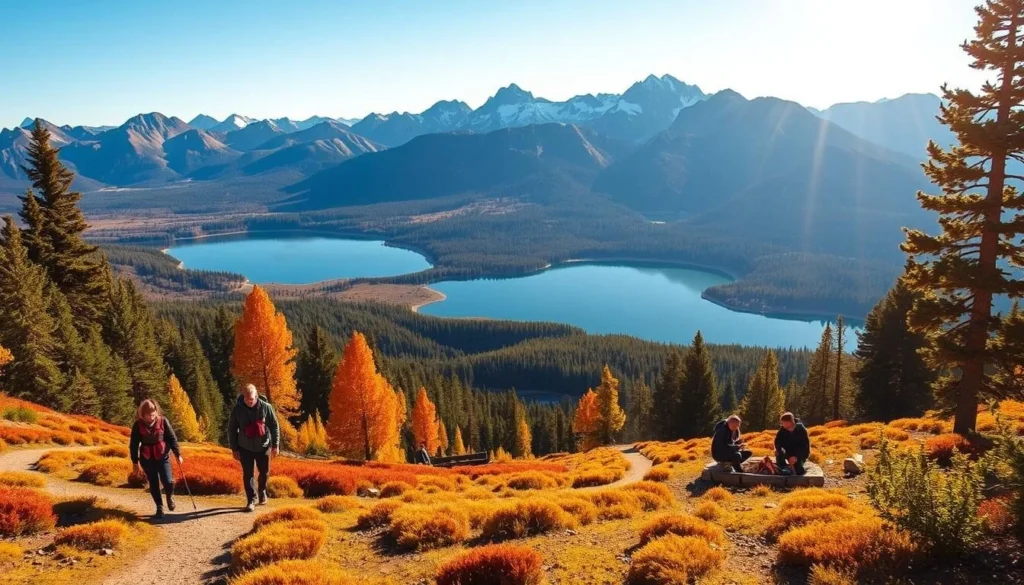
Each season in Lassen Volcanic National Park offers a distinct way to experience its natural beauty. Whether you’re looking to hike, fish, or simply enjoy the scenery, there’s something for everyone at this incredible national park.
Safety Tips and Park Regulations
When visiting Lassen Volcanic National Park, it’s crucial to be aware of the safety tips and park regulations to ensure a safe and enjoyable trip. The park’s unique geological features and high elevation demand special precautions.
- Always check the National Park Service website or visitor centers for current weather conditions before heading out, as the weather in Lassen Volcanic National Park can change rapidly.
- Stay on designated trails and boardwalks, especially in hydrothermal areas, to avoid severe burns from boiling water or mud.
- Be prepared for high altitude effects by drinking plenty of water, pacing yourself while hiking, and recognizing symptoms of altitude sickness.
- Plan to complete summit hikes early in the day to avoid thunderstorms common in summer afternoons, and know how to seek shelter if caught in a storm.
- Maintain a safe distance from wildlife, store food properly at campsites, and never feed wildlife to ensure park safety.
Weather Considerations and Hazards
The weather in Lassen Volcanic National Park can be unpredictable. Always check the snow conditions before planning your trip and have a backup plan in case of road closures. Be prepared for direct sunlight as there are limited trees for shade.
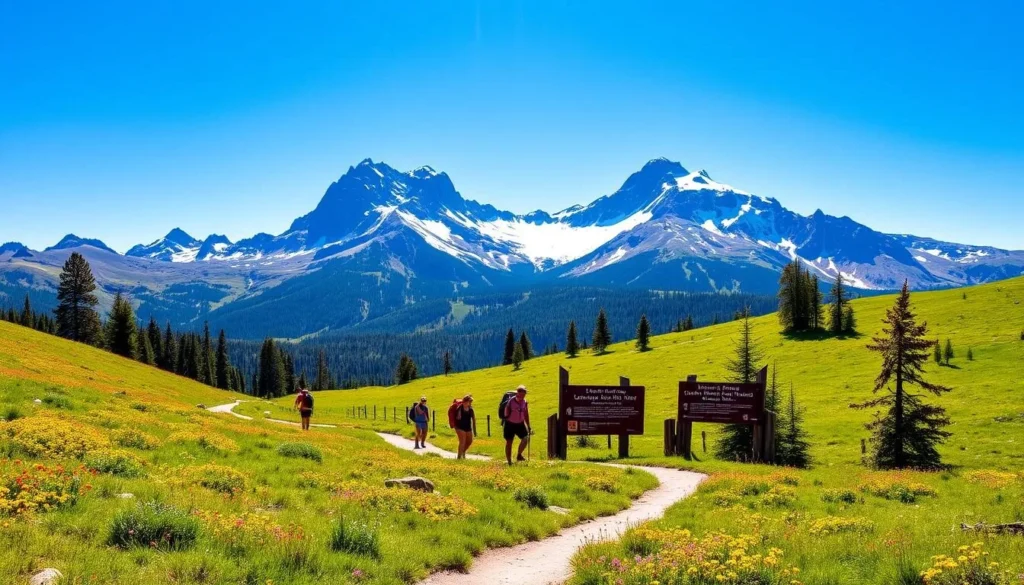
By being aware of and adhering to these safety tips and regulations, you can have a safe and enjoyable experience in Lassen Volcanic National Park.
Conclusion: Why Lassen Volcanic National Park Should Be on Your Bucket List
If you’re looking for a national park experience without the crowds, Lassen Volcanic National Park is an ideal choice. Located just four hours northeast of San Francisco, thislesser-visited national parkoffers a unique blend of volcanic wonders and pristine wilderness.
With only about 500,000 visitors annually, compared to Yosemite’s 4.5 million, you can enjoyserene landscapesand spectacular natural features without the traffic and crowded trails. The park’s diverse landscape allows you to witness active geology in action, from steaming fumaroles to the massive Lassen Peak that erupted dramatically just over 100 years ago.
The variety ofthings to doin Lassen Volcanic National Park makes it appealing to visitors of all ages and abilities. You can take in the views on easy roadside stops, challenge yourself on hikes like the Lassen Peak trail, or enjoy peaceful lake activities.
By adding Lassen Volcanic National Park to your travel bucket list, you’ll discover one of America’s most fascinatingvolcanic landscapes. You’ll gain a deeper appreciation for the powerful forces that continue to shape our planet. So, plan your visit during the beautiful summer or fall season when Highway 89 is snow-free, and experience the best that Lassen Volcanic has to offer.
In summary, Lassen Volcanic National Park offers a rare combination of accessible volcanic wonders, pristine wilderness, and minimal crowds, making it one of California’s most underratednational parks. With its diverse attractions and activities, it’s a must-visit destination for anyone who loves the great outdoors.
—
The above is subject to change.
Check back often to TRAVEL.COM for the latest travel tips and deals.
